
"7 out of 10 PS2 games are what I live for" - Promise Mascot Agency Game Director Oli Clarke Smith on development, self-publishing, Switch 2, & more
Kaizen Game Works' Promise Mascot Agency released earlier this year across consoles and PC platforms. It recently saw a big free Prepare to Grind update arrive adding new gameplay mechanics, Mascot Support Heroes with indie collaborations, difficulty options, and much more. Following that update, I had a chance to catch up with Promise Mascot Agency and Kaizen Game Works Game Director Oli Clarke Smith to go behind-the-scenes with the game's development, learnings from Kaizen's Paradise Killer, how the team handled self-publishing, support from platform holders, a potential Nintendo Switch 2 version, how the team worked with Takaya Kuroda and Ikumi Nakamura, the soundtrack, and much more. This interview was conducted over email and it has been edited for clarity.
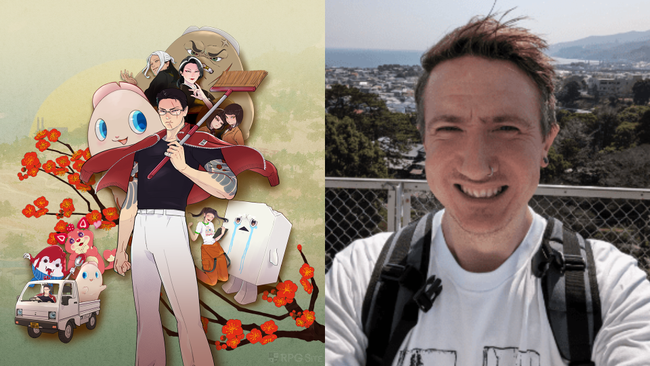
Oli Clarke Smith: I’m the Game Director at Kaizen. I’ve previously worked on a bunch of games like 50 Cent Blood on the Sand and Until Dawn. As Game Director, I oversee the direction and vision for the game, and also work very hands-on with everything, building levels, writing the dialogue, setting up inventory items, making the odd sound effect, and on and on. We’re a small team, so everyone has a lot of responsibilities.
Oli Clarke Smith: Rachel (our Art Director) wanted to make a management game about mascots. Her original idea was a 2D Kairosoft-like, but Phil (our Tech Director) and I wanted to create something bigger. Once we decided to do a full open world RPG, the floodgates opened for story and character ideas.
Oli Clarke Smith: We started Promise Mascot Agency about two months after Paradise Killer shipped. We signed Promise Mascot Agency during the development of Paradise Killer, and intended to start a bit later than we did, but we got the opportunity to work with Ikumi Nakamura and we jumped on it.
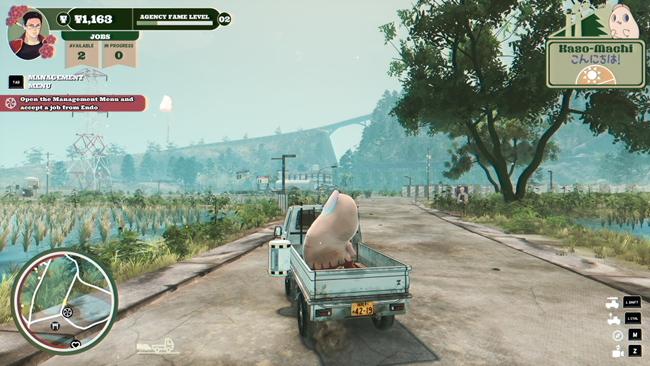
Oli Clarke Smith: Compared to Paradise Killer, Promise Mascot Agency has been a much harder game to make. It has exponentially more gameplay systems and characters. We made some mistakes about scope and schedule, and also failed to design enough upfront, so we were constantly trying to figure out what the game was. This persisted until about the last 18 months, when it started coming together, and we could see what the game needed to be, and we could focus on finishing it.
Oli Clarke Smith: I think the key learning is that people turned up for how we do things. We have an unconventional approach to characters, writing and gameplay mechanics, and we didn’t know if people would like what we do. Paradise Killer's success gave us the confidence to go further, and build all sorts of new things, knowing that we’d be able to bring them together with our world building and humour. As well as this, we have a larger team now, and more skills. People have been able to contribute in ways outside of their discipline. Phil took on a lot more game design, Rachel took on a lot of the narrative design, Harry took on a lot of tech art, and through her QA testing Emily helped shape our perceptions of some of the characters and informed gameplay decisions.
Also, it is okay to have a less than perfect movement system. Paradise Killer’s movement controls are not as perfect as Mario 64 or Celeste, but by having a unique feeling game, the player can enjoy mastering something with a different texture.
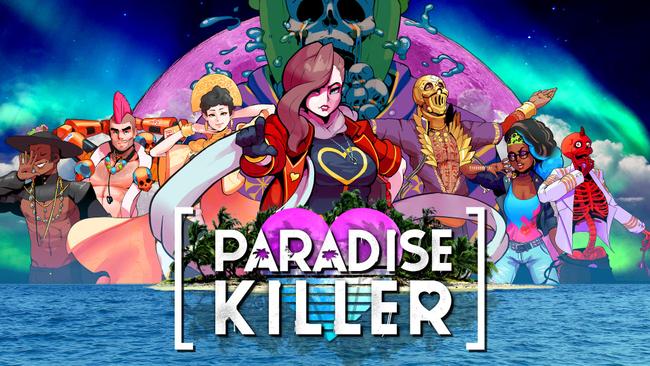
Oli Clarke Smith: Thank you for saying so. The gameplay loop was pulled apart, rewritten, remade and re-imagined A LOT during development. I designed the original simulation, and then Phil took control of implementation and redesigns. For example, in the very first iteration, you had a day-to-day calendar that you would assign mascot jobs to, but in the final game, as soon as you accept a job, the mascot departs for it. We also had a totally different gameplay experience for the mascot battles. We build everything in a modular way, so that we can rewrite one feature and the rest of the game still works.
Oli Clarke Smith: As well as the ones you listed, Persona 4 was a big influence due to the ‘weird stuff in a rural town’ thing it has going on. Also, the way you send your creatures out to events in Viva Pinata was a direct inspiration.
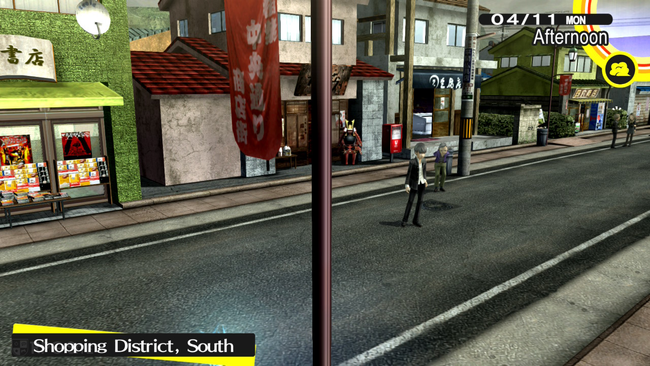
Oli Clarke Smith: If you like the yakuza storyline, Takashi Miike and Takeshi Kitano films are a great watch. For some of the other themes in the game, the mangas Sanctuary and Akumetsu are worth reading, and I was directly inspired by the power of friendship in One Piece when I wrote the finale.
Oli Clarke Smith: Promise Mascot Agency was funded by Kowloon Nights, and they have a lot of contacts throughout the industry. One day we got an email from them asking if we’d like to work with her. We couldn’t believe it. She and her concept artist, Mai Mattori, put together an art bible, mascot designs, main character concept art and sketches for our NPCs. They also provided guidance on setting, tone and locations. We took that and with the rest of our team, molded it into the finished Promise Mascot Agency. We checked in with her and visited her studio during development, but her role was to provide initial creative direction and guidance.
Oli Clarke Smith: Nakamura-san and Rachel both liked the idea of tying the theme of the game (saving a bankrupt business) into the real world problem of depopulated rural towns in Japan. This allowed us to achieve my design goal of having the town feed into the management simulation, and the management simulation change the town, in a repeatable loop. We all like occult and spooky stuff, and wanted to take a realistic town, and layer on the weird and wonderful to create an otherworldly, but recognisable experience.

Oli Clarke Smith: Rachel really values handcrafted art, and wanted to make a game that could only be done with a human’s craft. She loves painting textures, so she wanted to go for an entirely painted world. Our rendering programmer, Harry, loves experimenting with post processes, and Rachel worked with him to emulate an old Japanese CRT effect. The post processes in Unreal use real world values from old Japanese film stock, so the colours evoke the feeling of watching the TV in the 80s.
Oli Clarke Smith: Rachel used a lot of references from Showa era Japanese print adverts, TV commercials, and modern music videos that hark back to that period of time. She used RGB values from real world Japanese patterns and media to create a palette to use in the UI. Phil then worked with her to use those colours to delineate interactive and non-interactive parts of the UI. The three of us are UI maximalists, and really dislike minimal, aesthetically bland UIs that plague games nowadays. Have you seen the UI in a AAA game? Holy lord, what a bland experience.
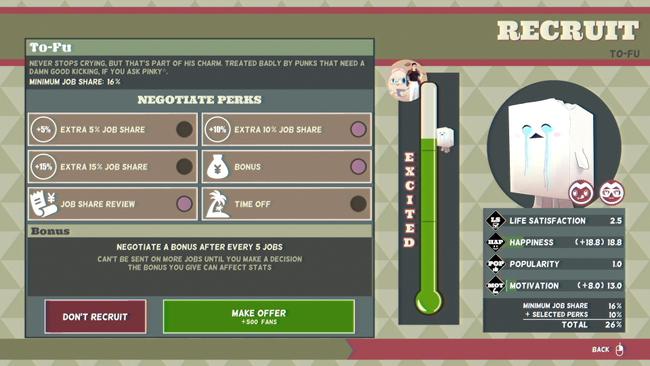
Oli Clarke Smith: We were blessed to work with a veteran localiser, Roppyaku Tsurumi. He handled all of the voice recording along with Kure-san at Xenorex. They put out an audition call for the main characters, and Kuroda-san just turned up. We didn’t ask for him, and were worried about the connotations of using him, but he became Michi. He delivered a much different performance to Kiryu. Cameos like Shuhei Yoshida and SWERY were requested by us, but otherwise, all actors were decided upon by Tsurumi-san. In fact, he sent us the auditions and we gave feedback on which voices we liked, and he told us every choice we made was wrong. We were very happy to go hands off after that, and just let him do it, and he delivered us one of the strongest voice casts I’ve ever heard.
Oli Clarke Smith: I put my foot down and said that if we do other languages, it has to be performed by Japanese actors that can speak the other languages. I personally don’t like hearing Western voices in the dubs of games like Ryu Ga Gotoku or Persona. Like, why can’t they even pronounce each other’s names correctly? Ghost of Tsushima really nailed the bilingual performance, and I refused to do anything other than that. That was too much of a challenge, so we went with our first choice; Japanese only.
Oli Clarke Smith: We try to work with people that we can trust, and in doing so, we can trust them to put their own lived experiences into the game. For example, the interior of Bar Itai (minus the S&M dungeon) was based on a very local bar that Nakamura-san travelled to when she explored Kyushu. We’re Westerners, and while we have travelled to Japan multiple times and researched the culture, we have to get out of the way of our Japanese team members and let them put their culture into the game. Sometimes we would directly ask for help, other times we would just give our 2D artist Inko open ended direction of what we wanted. She is from Japan, so we were able to just let her input into the game how she wanted.
Additionally, from our point of view, we wanted to include bits of Japanese culture that we like, but we have to do it in a subtle way. It goes without saying that it should be well researched, but also, it needs to fit in context. For example, Japanese convenience store egg mayo sandwiches are out of this world good. We wanted to include something about them in the game, but making it a quest goal would seem weird to a Japanese person since the food is so mundane. Instead, it became a reference in some optional dialogue.
I cannot emphasise enough, research thoroughly, have native people you can ask, and let native team members tell you how things should be.
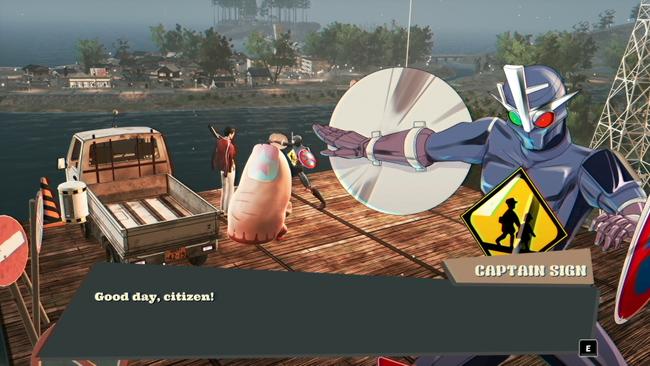
Oli Clarke Smith: We actually ended up with way more icons on the map than I wanted. I didn’t want the collectables to appear on the map, but as the game evolved, and we saw how people played it, we realised that our original vision of a relaxed game wasn’t what we had made. People played the game in an obsessive way, and wanted the collectables on the map. That said, we implemented the Ask Pinky feature, to let the player opt into having objectives displayed for them. The main story objective is always displayed, but the player chooses when to ask Pinky to mark extra objectives on the map. This allows the player to choose their comfort level with map markers and objectives.
Oli Clarke Smith: The time trials included in the update were cut content that we brought back. That was the only major thing that didn’t make it into the original game. The grinding was something the truck programmer, Harry, had been wanting to do, but never had the time for. It started as an experiment and then got worked up to final quality. The heroes we added for the update were a way to add in more rewards, and to work with some industry pals.
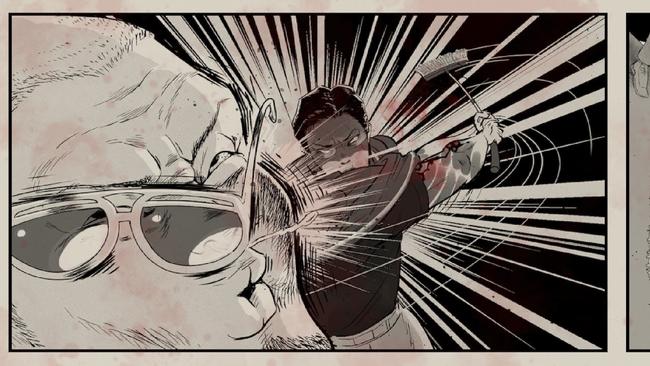
Oli Clarke Smith: Rachel and I wanted to make a main yakuza character that didn’t draw comparisons with Kiryu et al. We wanted to make a more modern, vulnerable yakuza. He goes on a journey of personal discovery while in Kaso-Machi, and we wanted to open him up to new experiences, and him learning to lean on his found family and friends. Classic yakuza characters are often depicted as stoic lone wolves, but I think I subconsciously channeled Monke D. Luffy from One Piece for some of Michi’s arc. Luffy is a pirate captain that doesn’t precisely know what he’s doing, but he has a goal, and surrounds himself with a crew that he would do anything for, and who would do anything for him. Michi’s life as a yakuza has been as a crew member up to this point. Now he is the captain, and must show his crew that he’d lay down his life for them, if they do the same for him.
Oli Clarke Smith: Our job as developers is to take abstract or real world concepts and present them in a way that informs and delights players. I wasn’t really worried about whether players would understand mascot culture or not, because we had to make something that would give them the information they needed.
Oli Clarke Smith: As we developed the game, we came to realise how much the game needed. Everything we did was a crushing amount of work, but we felt that all of these things were needed to achieve the vision, and fulfil the potential of the concept. For example, since it is an open world RPG type game, we needed some kind of conflict based friction, so we had the mascot battles. If we had hesitated on this, we would have had a hole in the concept. Adding all of these features has done nothing good for my health, but it was what the game needed. Fortunately, Phil is an amazing gameplay programmer, and has a ‘yes and’ approach to everything we do. We all sacrifice parts of ourselves for the betterment of the game.
Oli Clarke Smith: There are some minor things that we wanted to include but didn’t manage to. We wanted to have a moment between Shimazu and Mieko that wasn’t in the main story for example, but we didn’t get to do it. I would have liked to have put in more occult stuff but ran out of time. We have ideas for a sequel’s narrative that are very cool, but they are inspired by what we have, rather than something that we didn’t get to do. We approach making our games as this might be the last thing we ever get to do, so we can’t leave them incomplete.
Oli Clarke Smith: I think I’d quite like to see Michi and Pinky face off a non-yakuza threat. Either an occult threat to the town, or a rival mascot agency.
Oli Clarke Smith: Quite frankly, that trailer didn’t get anywhere near the reaction we had hoped for. We realised that we weren’t explaining the game well, so instead of changing the game, we changed our approach to marketing and what we show from the game.
Oli Clarke Smith: Our programmers are very experienced, and that combined with using Unreal, meant that we could plan for the other platforms early. We had all platforms up and running maybe a year into the 4.5 year dev cycle, which allowed us to see what was happening on them early. The Switch is the only problem console because the specs are so much lower. We had to do a lot of work to get the game running at 30 fps on that platform. I’m glad that we’re leaving that platform behind now, though I suspect that we’re going to have the same problem when we develop PS6 and Switch 2 games as the gap will be massive again.
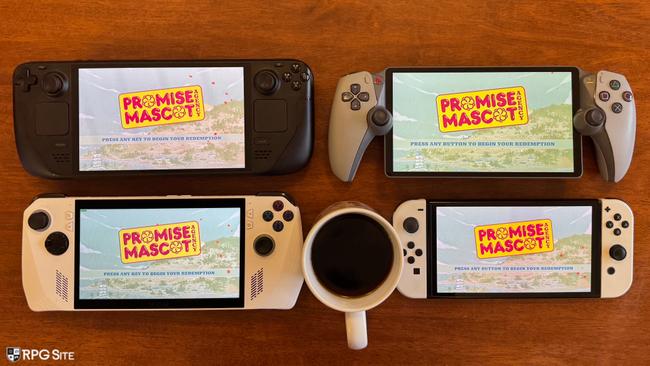
Oli Clarke Smith: That work isn’t hard thanks to Unreal’s support for those features. The hardest thing is finding the time as they are "minor" features compared to other things. There are some things that you must do, like activities, but the Dualsense stuff is optional. For the Dualsense implementation, Harry did it and he really likes doing that work. The rest of us are all primarily PS5 players, so we wanted the DualSense to receive some attention (it is my favourite controller, I have four of them to use on different platforms).
Oli Clarke Smith: If Nintendo ever let us have a dev kit, yes! We’re desperate to port to Switch 2, but the dev kit situation is really bad for indie devs. Some people have asked us if we’re able to patch the Switch version to have an unlocked frame rate for people on Switch 2, but we can’t do that blind. We have no way of testing it, and due to how berserk people get online about performance, we’re not going to release anything related to performance that can’t be tested.
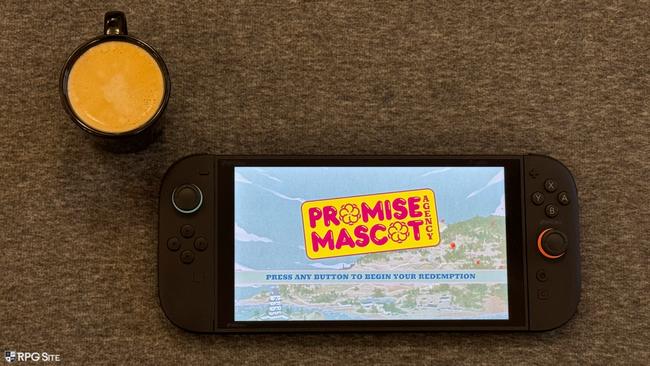
Oli Clarke Smith: The Steam Deck is a really capable machine, and due to the way we did the PC settings, we were able to detect the platform and configure the settings accordingly. Since we were doing the Switch anyway, the Steam Deck optimisation naturally came about through that work (though I should point out that the Steam Deck version is higher fidelity and performs better than the Switch version, just due to the hardware difference).
Oli Clarke Smith: I don’t think that has really affected us since we’re not pushing Unreal that hard. I think our coders did something to mitigate the stutter issues, but due to the way we kitbash and reuse materials in our environment, I don’t think we ran into the shader compiler stutters.
Oli Clarke Smith: We became friends with Alpha Chrome Yayo on social media after Paradise Killer, and realised that his style was perfect for the game. He is heavily influenced by Japanese music and instruments, as well as PS1 game soundtracks and Twin Peaks. He is amazing to work with. He is a music making machine and just churns out bangers so quickly.
We also wanted to collaborate with a Japanese musician, and we were put in touch with Koike-san. We were starstruck when we started talking to him. Phil and I have spent a lot of time playing the Dead or Alive games together, and I love the games he worked on at Grasshopper.
With all the musicians we work with, we don’t ask them to create music for specific moments. We give them themes like ‘spooky’ or ‘tense’ and then just let them create music like they were composing an album. I think that really helps to give our games a distinctive musical style.
Oli Clarke Smith: I really like Thunder God by Mr. Chrome Yayo, as we tie it into the gameplay and story in a meta way that most other games wouldn’t do. That doesn’t sound very modest since I wrote that section of the game, but I revel in video game-ass video games that understand the medium, and that moment is an example of that.
Oli Clarke Smith: Possibly. It isn’t something that we’re in active conversation about, but we’d be open to it.
Oli Clarke Smith: I blissfully handed that over to other talented people to handle. We’ve worked with Jose Salot before and love his art, so we immediately asked him to be involved, and Rachel handled direction and management. Rachel does excellent specifications for our artists, and she really felt strongly about how the music for our game should be represented. I love seeing other artists give us their take on our worlds and characters.
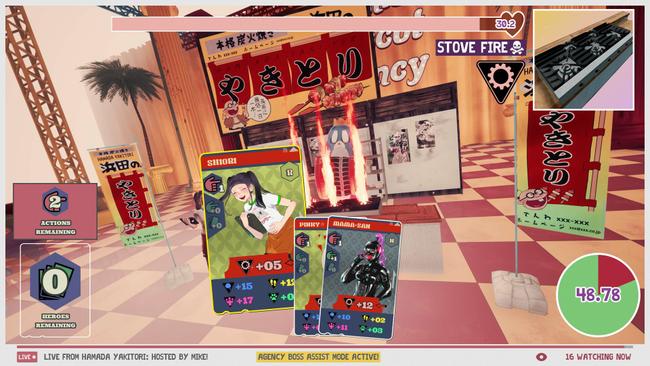
Oli Clarke Smith: Nothing to announce at the moment, but please stay tuned…
Oli Clarke Smith: Hard as shit. It took us ages to find the right marketing partner, and actually getting your game on to different storefronts is a total pain. Every storefront has different, and very specific, requirements for key arts, image capsules, text, trailer end cards, deadlines, restrictions, approvals and so on. Phil lost a massive chunk of time on the game dev to set everything up. One console’s storefront back end is hideously unreliable, and neither of our coders could log into it unless they were in incognito mode. What’s that about?
On the other hand, it allowed us to chart our own destiny.
Oli Clarke Smith: We’re too small for dev help, but we had some wonderful support from all three consoles with marketing and social media support. They all have some really great people working for them that love to champion games.
On the other hand, when Microsoft approached us about Game Pass deals, they had entered their ‘extremely bad offer’ phase of dealing with indies on Game Pass and we had to turn them down after a stunned silence on the call with them.
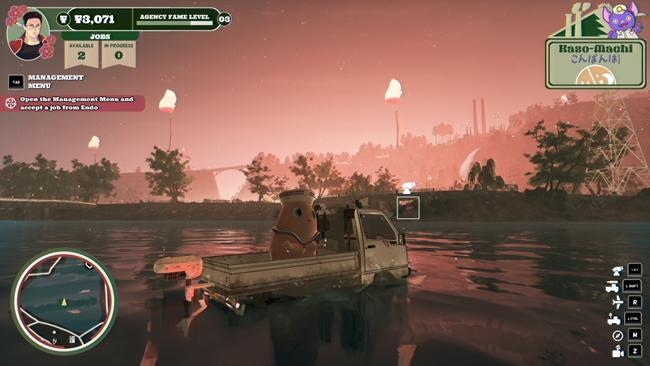
Oli Clarke Smith: I was hoping for them! 6 and 7 out of 10 PS2 games are what I live for. I approach our games as if they are things I want to discover on the shelves of Japanese retro game stores. For Paradise Killer, one of my influences was looking at Germs Nerawareta Machi (a Japanese only, open world PS1 game) and imaging what could be in it. I can play it, but not understand it due to the language barrier. It was fun imagining what could be in it and designing Paradise Killer to capture that feeling. For Promise Mascot Agency, I imagined it as ‘what if PS2 era Irem (Disaster Report, Steambot Chronicles) or Acquire (Way of the Samurai, Shinobido, Kamiwaza) were making this game’?
That sense of ‘anything could be in this game’ that you’d get on PS1 and PS2, has faded over time as bigger games have become much more predictable due to their budgets. The last game that I got that feeling from was Final Fantasy XV. Due to the development of that game, when you started it up, it felt like the game could include everything, and that was so exciting.
Oli Clarke Smith: When we finished the game, we knew we wanted to do a free update, and were emboldened when people finished the game and asked for more. We were focused on shipping the game, so we didn’t plan what was in it, but after a few weeks of recovery, the team got together and discussed what we wanted to add. We ended up working on it for two and a bit months I think.
Oli Clarke Smith: There are no more content updates planned. Promise Mascot Agency has done well, but we need to secure funding for our next game and look to the future.
Oli Clarke Smith: Nope. I don’t see how they’d be profitable, and we’re only interested in putting our games on devices that have real controls.
Oli Clarke Smith: I’d really like to do some kind of ghost hunting mode with Shiraishi from Kinki Spiritual Affairs Bureau in the back of the truck gunning down unlawful spirits.
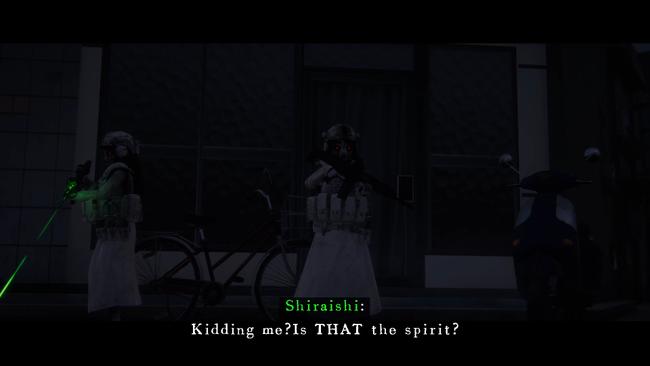
Oli Clarke Smith: The Hundred Line is incredible. It is a masterpiece. The story is constructed by masters of their craft, who truly understand and love the medium. The battles are unexpectedly brilliant.
The console versions of Sorry We’re Closed and Kinki Spiritual Affairs Bureau released this year so they count, and those are both brilliant games. I’ve tried every Ninja Gaiden game, but I’m a slow reaction scrub and can’t get through them. The very easy difficulty mode in Ninja Gaiden 2 Black finally allowed me to see one through, and wow, what an experience!
Team Ladybug are amazing metroidvania devs, and their Blade Chimera from January rules. Beyond Citadel and Metal Garden on Steam are fabulous first person shooters. I think the Raidou remaster will probably be a GOTY contender, but I haven’t started it yet.
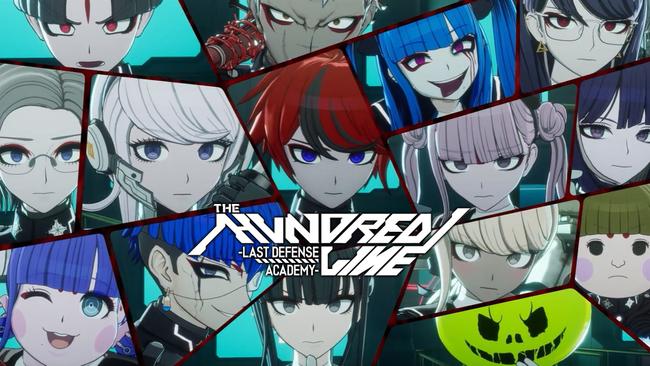
Oli Clarke Smith: Black as midnight on a moonless night.
Phil Crabtree (Tech Director): At the risk of sounding emo, just an empty cup please! I’ve never drank coffee. I don’t think I’ve ever even tried it.
Rach Macpherson (Freelance PR): I like my coffee with a LOT OF milk. I'm a big fan of a fancy coffee bean haha, but my bank account isn't.
Promise Mascot Agency is now available for PlayStation 5, Xbox Series X|S, Nintendo Switch, and PC (Steam). Read James' review of the game here and my feature comparing the game on Steam Deck, ROG Ally, PS5, and Nintendo Switch here.